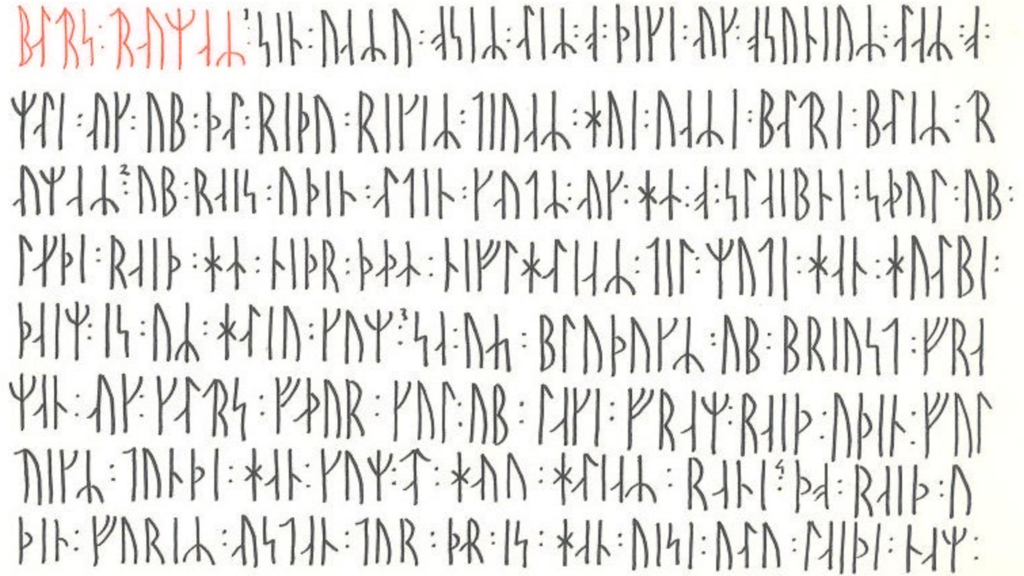Launching in:
days
hrs
min
sec

The Poetic Edda was never written in runes--until now. Inspired by a famous manuscript (the Codex Runicus) that dates to the same time period, Old Norse scholar Dr. Jackson Crawford will construct the Old Norse text as it would have been written in runes by a speaker of Old Norse.
Others have attempted to put the Poetic Edda into runes before. These efforts have typically made use of the 24-letter Elder Futhark, which was unknown to speakers of Old Norse (it went out of use in much earlier centuries, during the period when the earlier Proto-Norse language was spoken). Instead this project will have the Poetic Edda in the runes familiar to the people who composed the poems, the 16-letter Younger Futhark (to be determined whether this project will make use of the expanded Younger Futhark rune set called the Medieval Runes, or the middle stage in which "stung" runes represented at least E, G, and Y). The text will also feature the regular use of bindrunes, employed by medieval carvers and scribes to save space and a much-requested feature by the runically inclined of today.
The sample image shows the first stanzas of the poem 'Baldrs draumar' in Viking-Age Younger Futhark (only 16 letters representing all the sounds of Old Norse). The rune-forms and style are in imitation of the Codex Runicus.
Others have attempted to put the Poetic Edda into runes before. These efforts have typically made use of the 24-letter Elder Futhark, which was unknown to speakers of Old Norse (it went out of use in much earlier centuries, during the period when the earlier Proto-Norse language was spoken). Instead this project will have the Poetic Edda in the runes familiar to the people who composed the poems, the 16-letter Younger Futhark (to be determined whether this project will make use of the expanded Younger Futhark rune set called the Medieval Runes, or the middle stage in which "stung" runes represented at least E, G, and Y). The text will also feature the regular use of bindrunes, employed by medieval carvers and scribes to save space and a much-requested feature by the runically inclined of today.
The sample image shows the first stanzas of the poem 'Baldrs draumar' in Viking-Age Younger Futhark (only 16 letters representing all the sounds of Old Norse). The rune-forms and style are in imitation of the Codex Runicus.